These four green horsekeeping tips will help make your farm more eco-friendly.
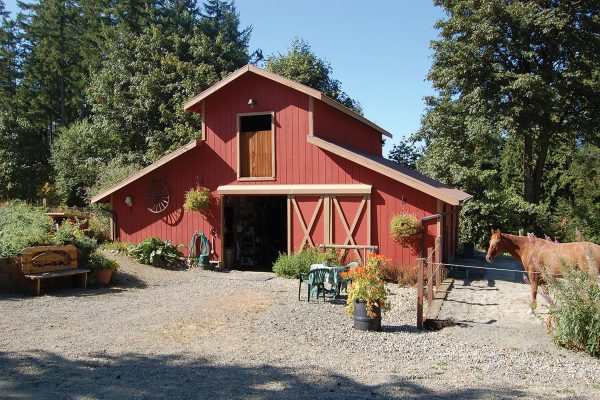
Most of us have horses because we appreciate being outside and enjoying nature. Did you know that you can enjoy your horse plus take care of the great outdoors at the same time? These days nature can use all the help it can get! Many of the choices we make in our lives, and especially in our horses’ lives, can be beneficial to keeping our horses healthy as well as keeping our planet healthy, too.
Let’s look at four easy horsekeeping tips for being “green” and eco-friendly. These ideas are easiest to implement if you keep your horse on your family’s property, but even if you board or lease a horse, the property owner may allow you to use these ideas with their permission.
1. Pick Up Manure Regularly
Picking up manure from pastures every one to three days reduces the parasite (worm) population in your horse’s gut, which will keep your horse healthier. It also gets rid of the places where annoying flies and insects like to live. Finally, it reduces the mud and muck that makes it hard for you (and your horse) to get around during the rainy season.
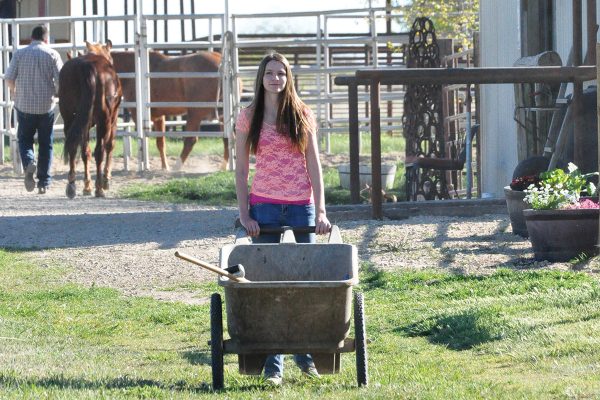
A good thing to do with manure is to compost it. Create a pile someplace that’s easy to access. Make sure there are no creeks or wet areas nearby, as accidental runoff from manure can be harmful to fish or other aquatic animals if it gets in water.
To protect your compost from getting soggy from rain or snow and then creating harmful runoff, cover it with a plastic tarp. This will keep it from getting too wet in the winter and will allow the manure to begin composting. In a few months, it will break down into a product that is excellent for soil and plants in your pastures and gardens.
When the pasture ground is no longer soggy in the late spring or early summer, compost can be spread on the grass in a thin layer. Or you may be able to advertise and give it away to gardening neighbors—and maybe even sell it!
Grassy pastures are better for the planet because grass uses manure and urine to grow instead of letting it run off your property and into a nearby water body. Strong, healthy pasture plants even help reduce climate change!
2. Use Footing in High-Traffic Areas
Put down gravel (crushed rock) in your horse’s confinement areas where it gets muddy. This is another way to get rid of mud and make it easier for you to do chores.
Put down 2 to 4 inches of footing around gates, water tanks, and in front of stalls. If you can get a dump-truck load of gravel, then you can wheelbarrow in a load or two to problem areas. Popular footing choices are crushed rock (1/2 to 5/8 inch) or something else coarse like crushed granite (called granolithic).
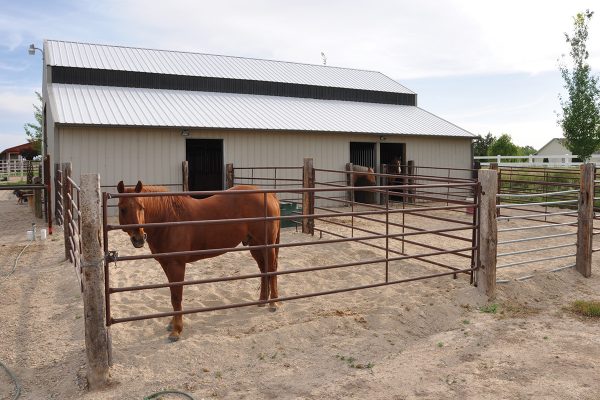
Your horse will thank you—and you will, too, when it’s easier to push a wheelbarrow through an area. Getting rid of mud is also good for nature because muddy runoff can easily end up in waterways like ditches or ponds and cause problems for fish and other aquatic animals.
3. Use Nature to Fight Nature
Many types of birds eat bugs, and you can encourage them to come live near your horse by giving them a safe home and a food source—the flies and mosquitoes that bother us!
Some of North American birds that love bugs are swallows, including violet-green swallows, tree swallows, barn swallows, and cliff swallows, as well as purple martins and bluebirds. These birds eat about 800 flying insects per day per bird, which is a lot of free insect control for you.
To invite the right bird to your place, you need to provide their preferred nest box and follow the directions on where to place it. All these birds are secondary cavity dwellers, meaning they build their nests in already created holes and crevices, such as those made by woodpeckers in dead trees. But they also take very well to nest boxes, which are easy to build or buy and hang on your horse property.
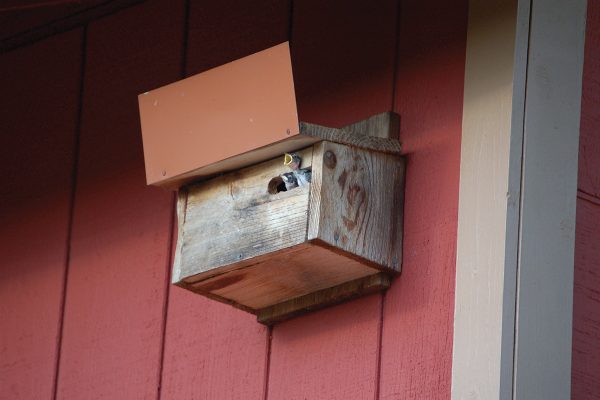
Contact your local Audubon club, extension office, wild bird store, the library, or the internet for advice on the types and sources of nesting boxes. You may even be able to build a low-cost nest box yourself.
BONUS: Springtime nesting season is conveniently at the same time as shedding season for your horse. During grooming sessions, collect horse and animal hair to set out in tufts in your pasture area. Once nesting season starts in your area, swallows and other birds will pick up that hair and recycle it into nesting material.
Providing nest sites and food sources for birds is a wonderful thing for wildlife—and it will benefit you and your horse, too!
4. Reduce, Reuse, and Recycle
Reduce, reuse, and recycle are popular green, eco-friendly methods and they can apply to horsekeeping, too.
Recycling is important to do, but creating new products from used materials is even better for the environment, and it saves money. You might even be able to make a game of discovering new ways to reuse old things.
Pallets—the flat, wooden structures that goods are stacked on—are an example of something that can be repurposed. They are the mainstay of the shipping industry. Your horse’s hay or feed delivery may have come on pallets, or you can often get some from feed stores or large garden supply stores.
Depending on the condition of the pallets you find, you may be able to put them to use in all sorts of ways around a horse property, from walls for compost bins to cute stall doors (for less “testy” beasts, such as dogs or ponies), and maybe even fencing. Use pallets for storing and stacking things off the ground, such as feed, hay, lime, grass seed, et cetera. Pallets can even be broken up and the wood reused to build lovely new structures.
Horseshoes are another item we have plenty of on most horse properties, and they can be made into so many other handy things. They make great hooks for hanging halters, ropes, fly masks, et cetera. Horseshoes can be welded to become door latches or handles. They also make great decorations for wall hangings or picture frames (check out Pinterest for ideas).
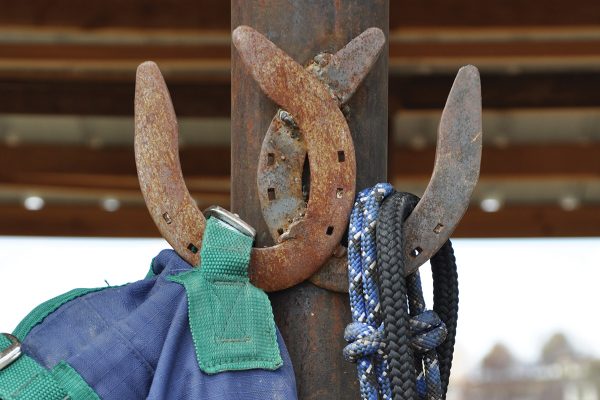
There are lots of uses for old feed sacks, too. Load them with sand or dirt and put them in the back of your parents’ truck for extra weight in winter ice and snow. Carry one with you on trail rides for picking up garbage along the way. Keep some on hand as a clean, dry surface when you have vet work to do, like wrapping a hoof. Or maybe use them for those who want to transport home some of that nice compost of yours!
And while we’re at it, don’t forget to bring your own cloth bags with you to the feed store to prevent having to recycle additional plastic shopping bags.
Recycling reduces the amount of trash in landfill sites, which cuts down on the cost of waste disposal and the clearing of more land for new landfills. Decomposing waste can release noxious gases and chemicals, and trash in the landfills lasts for hundreds of years.
Recycling also preserves wildlife. When fewer trees are cut down to make new wood products, that means more land for wildlife and trails for riding on. Recycling helps!
Implementing these nature-based, green horsekeeping techniques will benefit you, your horse, your property, and your neighborhood. Plus, they go one step further towards helping us keep our planet a little greener now and for the future.
This article about green horsekeeping tips appeared in the March/April 2023 issue of Young Rider magazine. Click here to subscribe!


